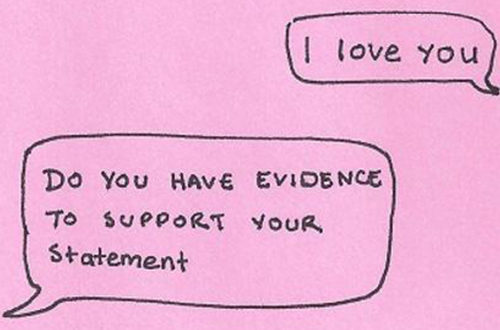Several causes of action may be pled in conjunction with a claim for breach of fiduciary duty, depending on the facts and circumstances surrounding the case. Attorneys should consider the following claims when filing a breach of fiduciary duty cause of action and determine which, if any, also apply to their clients:
1. Constructive Fraud
Constructive Fraud occurs when a person or entity gains an unfair advantage over another through unjust means, usually by lying or omitting important details. Constructive fraud differs from actual fraud because the elements of constructive fraud do require intent, or actual knowledge of the lie or omission. For a more in-depth discussion of this issue, please read our previous blog post regarding the differences between a Breach of Fiduciary Duty and Constructive Fraud.
2. Unfair and Deceptive Trade Practices
To establish a claim for unfair and deceptive trade practices, the defendant must have committed an unfair or deceptive act, the action in questions must have affected commerce, and the act must have proximately caused injury to the plaintiff.[1] The statute excludes, “professional services by a member of a learned profession” in its definition of “commerce.” If a plaintiff proves this claim, the statute provides for treble damages – an amount triple that of the actual or compensatory damages – and for an award of attorneys’ fees, at the discretion of the court.
3. Negligence
A negligence claim is established when: (i) the defendant owed the plaintiff a duty of care; (ii) the defendant breached that duty of care; and (iii) the defendant’s breach was the actual and proximate cause of the plaintiff’s injury.[3] The duty of care encompasses numerous legal obligations outside of fiduciary duties. As such, it is entirely possible that someone can allege negligence without a breach of fiduciary duty. In one case, the court found a real estate agent had a fiduciary duty to “exercise reasonable care, skill, and diligence in a transaction of business entrusted to him, [and] he will be responsible to his principal for any loss resulting from his negligence in failing to do so.”[4] There, the “fiduciary duty” was used to describe a duty to exercise care generally, rather than an actual breach of fiduciary duty claim.
4. Gross Negligence
Gross Negligence goes beyond mere negligence. The above-mentioned elements for negligence are required in addition to wanton conduct with conscious or reckless disregard for the rights and safety of others. When courts examine whether an action was “wanton,” they look at the mindset of the person committing the action and whether it was done with a wicked purpose or with reckless disregard for the safety and rights of others.[5] If there are aggravating factors surrounding this willful and wanton conduct, North Carolina law allows plaintiffs to recover punitive damages and attorneys’ fees.[6]
5. Negligent Misrepresentation
Another claim that is sometimes pled in conjunction with breach of fiduciary duty is negligent misrepresentation. Negligent misrepresentation occurs when: (i) a party justifiable relies; (ii) to his detriment; (iii) on information prepared without reasonable care; (iv) by one who owed the relying party a duty of care.[7] The first element, “justifiable reliance,” means the plaintiff actually relied on false information and it was reasonable for him to rely upon such information.[8]
6. Fraud and Fraud in the Inducement
In order to satisfy the elements for fraud or fraud in the inducement, a plaintiff must show (i) there was false representation or concealment of a material fact; (ii) reasonably calculated to deceive; (iii) made with the intent to deceive; (iv) which does in fact deceive; (v) and results in damage to the injured party.[9] These claims depend on specific misrepresentations and, as such, require more rigorous adherence than the elements of constructive fraud.[10] However, “[p]roof of fraud in the inducement necessarily constitutes a violation of Chapter 75” for unfair and deceptive trade practices and shifts the burden of proof from the plaintiff to the defendant.[11] This enables the court to award punitive damages under Chapter 75 of the NC General Statutes.
7. Conversion
Conversion essentially means “stealing.” To succeed on a conversion claim, the plaintiff must show: (i) the unauthorized assumption and exercise of the right of ownership; (ii) over goods or personal chattels belonging to another; (iii) to the alteration of their condition (i.e., destruction) or the exclusion of the owner’s rights.[12] Conversion resulting from a breach of fiduciary duty typically involves a trustee or personal representative who takes property that rightfully belongs to the beneficiaries or heirs. In some cases, the trustee or personal representative has the right to take possession or control of property. However, if the beneficiaries or heirs demand the trustee or personal representative return property controlled by unauthorized dominion, then the beneficiaries or heirs may succeed on a conversion cause of action.
8. Unjust Enrichment
Unjust enrichment occurs when another person has unfairly benefitted from their actions or property. There are three essential elements: (i) a measurable benefit was conferred on the defendant; (ii) the defendant consciously accepted the benefit; and (iii) the benefit was not conferred officiously or gratuitously.[13] Unjust enrichment generally exists when a trustee or personal representative engages in self-dealing. For example, if a trustee chooses an investment option that generates significant fees for the corporate fiduciary, but confers a relatively low return on investment for the beneficiaries, the beneficiaries have a strong claim for unjust enrichment.
9. Professional Malpractice
Professional malpractice claims can be brought against an attorney or accountant by anyone who is a party to a contract with the professional, or anyone that is a third-party beneficiary to a contract with the professional.[14] Professional malpractice claims have four basic requirements: (i) the plaintiff was owed a duty for the professional to act with the reasonable standard of care for that profession; (ii) the professional breached that duty by failing to act as he/she should or committed an act in violation of that duty; (iii) this breach harmed the plaintiff and caused injury; and (iv) the injury sustained is compensable.[15]
When third-parties assert a professional malpractice claim, the third party must show (i) the extent to which the transaction was intended to affect the third party; (ii) the foreseeability of harm to the third party; (iii) the degree of certainty the third party suffered injury; (iv) the closeness of the connection between the attorney’s conduct and the injury; (v) the moral blame attached to such conduct; and (vi) the policy of preventing future harm.[16]
10. Breach of Contract
Occasionally, breach of fiduciary duty claims also give rise to breach of contract claims. To allege a breach of contract claim, the plaintiff must show that (i) a valid contract existed; and (ii) there was a breach of the terms of that contract.[17] It is not always necessary for plaintiffs to prove actual damages. Similarly to professional malpractice claims, breach of contract claims are available to third-party beneficiaries of a contract. These third-party beneficiaries must show (i) the existence of a contract between two other people; (ii) the contract was valid and enforceable; and (iii) the contract was entered into for the third party’s direct, and not incidental, benefit.[18]
11. Breach of the Implied Covenant of Good Faith and Fair Dealing
Whenever a court finds a breach of fiduciary duty occurred, the court may also find there was a breach of the implied covenant of good faith and fair dealing.[19] The relationship between these two causes of action is similar to a lesser included offense in criminal law. Thus, it is important to also plead this a breach of the implied covenant of good faith and fair dealing whenever a suit for breach of fiduciary duty is filed.
12. Declaratory Judgment
Declaratory judgment actions are frequently brought in conjunction with the above mentioned claims to determine whether the fiduciary’s conduct conforms to the directives of the document in question and to determine whether the document itself is valid. Declaratory judgment actions may be brought anticipatorily to protect fiduciaries from future claims because they clarify the rights and obligations of the parties to the agreement. Declaratory judgments can:
- ascertain classes of creditors, devisees, heirs, next of kin, or others;
- direct the executors, administrators, or trustees to do or abstain from doing any particular act within their fiduciary capacity;
- determine any question arising in the administration of the estate or trust, including questions of construction of wills or other writings; or
- determine the apportionment of federal tax, interest, or penalties.
An attorney experienced in handling fiduciary litigation claims should be consulted to determine potential claims and the best way to proceed, given the complexities of the situation. For more information, please visit us at www.lindleylawoffice.com.
[1] Dalton v. Camp, 353 N.C. 647, 656, 548 S.E2d 704, 711 (2001).
[3] Cowan v. Laughridge Construction Co., 57 N.C. App. 321, 323-24, 291 S.E.2d 287, 289 (1982).
[4] Brown v. Roth, 133 N.C. App. 52, 514 S.E.2d 294 (1999).
[5] Trillium Ridge Condo. Ass’n v. Trillium Links & Vill., LLC, 2104 N.C. App. LEXIS 1015 (2014) (unpublished).
[6] N.C. Gen. Stat § 1-52(9) (2015).
[7] Simms v. Prudential Life Ins. Co. of Am., 140 N.C. App. 529, 532, 537 S.E.2d 237, 240 (2000).
[8] Brinkman v. Barrett Kays & Associs. P.A., 155 N.C. App. 529, 532, 537 S.E.2d 237, 240 (2003).
[9] McGahren v. Saenger, 118 N.C. App. 649, 654, 456 S.E.2d 852, 855, desc. Review denied, 340, N.C. 568, 460 S.E.2d 318-19 (1995).
[10] Barger v. McCoy Hillard & Parks, 346 N.C. 650, 666, 488 S.E. 2d 215, 224 (1997).
[11] Whisnant v. Carolina Farm Credit, 204 N.C. App. 84, 95, 693, S.E.2d 149, 157 (2010).
[12] Stratton v. Royal Bank of Canada, 211 N.C. App. 78 ,83, 712 S.E. 2d 221, 227 (2011).
[13] Primerica Life Ins. Co. v. James Massengill & Sons Constr. Co., 211 N.C. App. 252, 259-60, 712 S.E.2d 670, 677 (2011).
[14] United Leasing Corp. v. Miller, 45 N.C. App. 400, 263 S.E.2d 313 (1980).
[15] Wall v. Stout, 310 N.C. 184, 200, 311 S.E.2d 571, 581 (1984).
[16] Leary v. N.C. Forest Prods., Inc., 157 N.C. App. 396, 404, 580 S.E.2d 1, 6-7, (2003).
[17] Woolard v. Davenport, 166 N.C. App. 129, 134, 601 S.E.2d 319, 322 (2004).
[18] Timothy L. Hardin v. York Mem’l Park, 730 S.E.2d 768, 775 (2012).
[19] Lackey v. Bressler, 86 N.C. App. 486, 493, 358 S.E.2d 560, 564 (1987).




